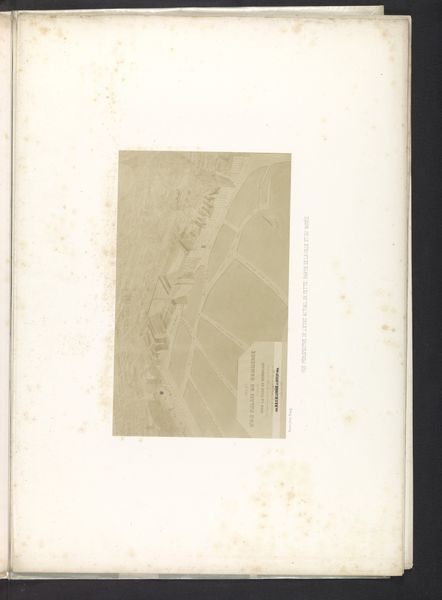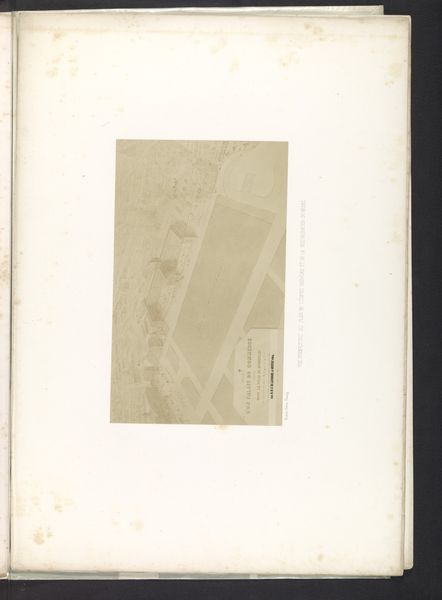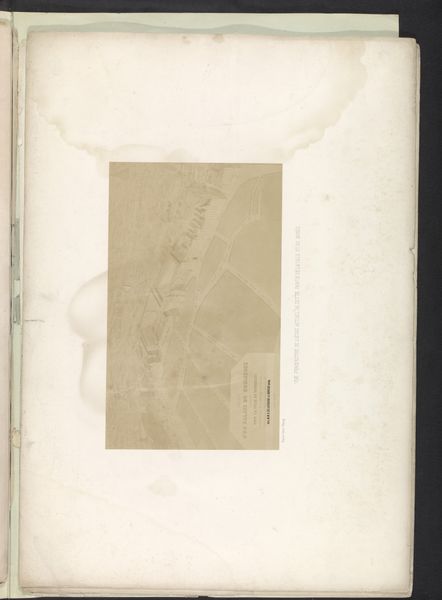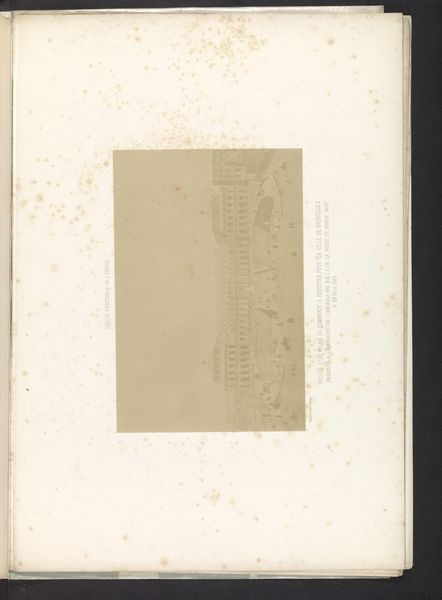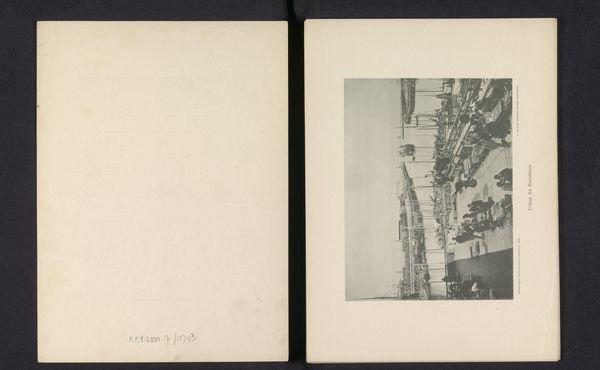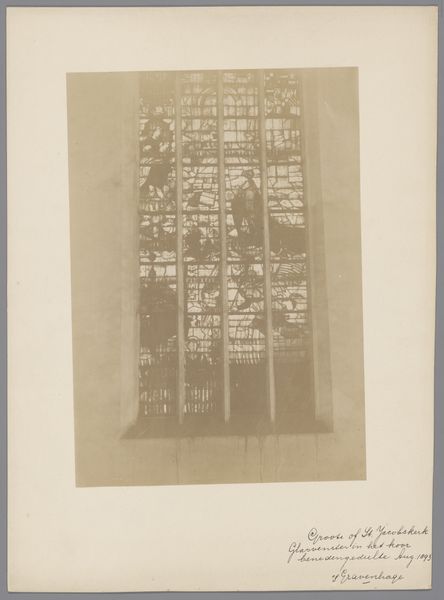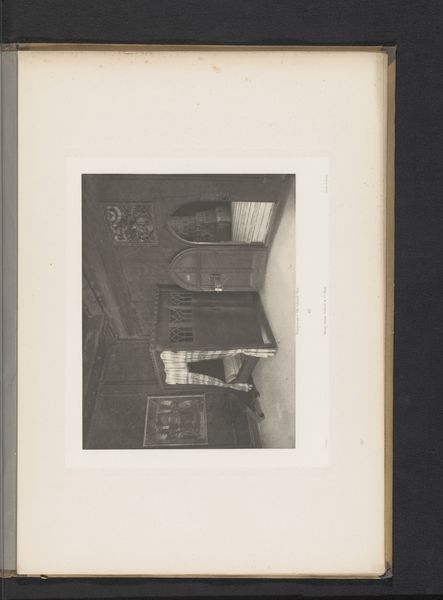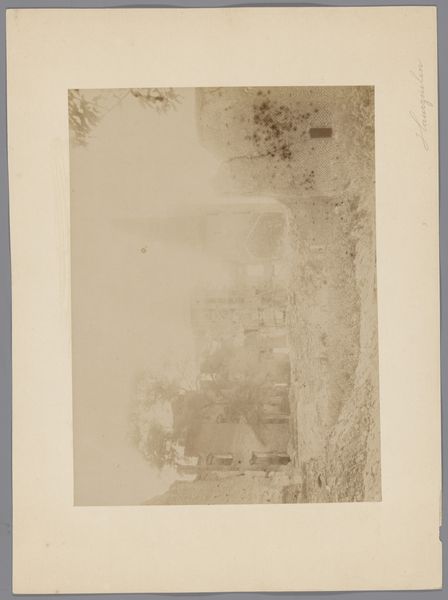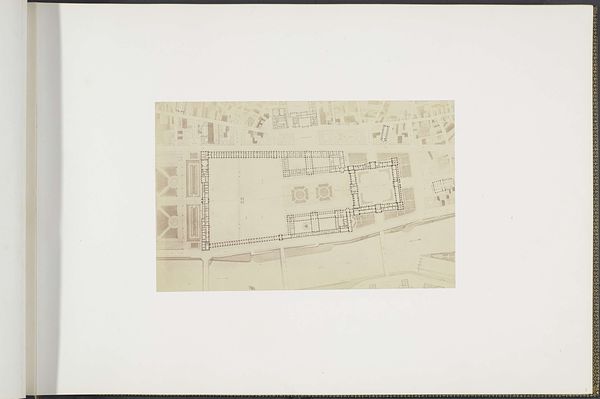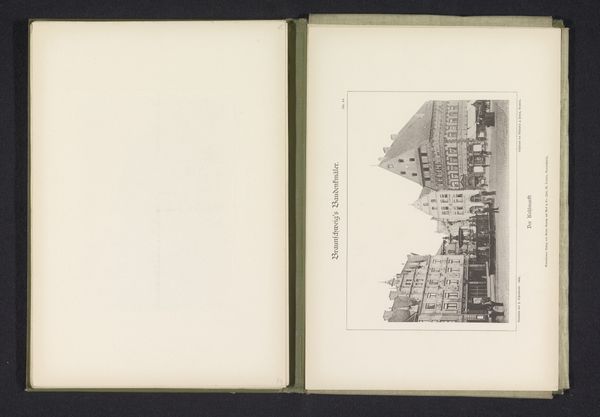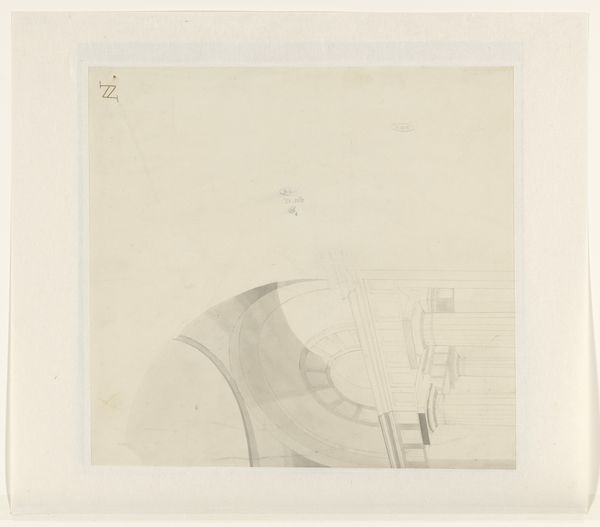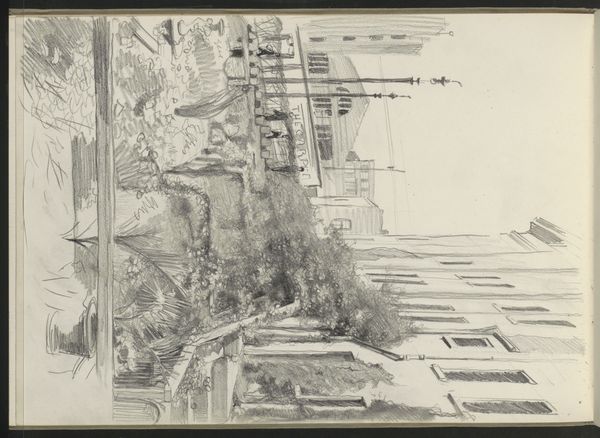
Dimensions: height 147 mm, width 206 mm
Copyright: Rijks Museum: Open Domain
Editor: We're looking at a photographic reproduction of a map of the municipality of Houten, dating roughly from 1890 to 1920, by an anonymous artist. It's a very pale image. What historical contexts do you think shaped the creation of such a work? Curator: This image offers us a fascinating lens through which to examine early urban planning and societal structures. The act of mapping itself is inherently political. What decisions were made about what to include and exclude? Whose perspectives were privileged in the process of surveying and representing the land? We see very rectilinear arrangements. What values of land management and ownership are embedded in that structure? Editor: That's a great point! So, who was this map intended for, and what would it have been used for at that time? Curator: Considering the time frame, we need to examine this in light of land ownership and power. The map could have served administrative functions, informing decisions about land allocation, taxation, or infrastructure development. Who benefits from this clear delineation of space? And whose history gets erased or simplified by its representation on the map? Are we seeing the erasure of communities and local landmarks through a colonial gaze of surveying and claiming lands? Editor: That's definitely something to consider! I'm beginning to understand that maps can tell more complex stories. Curator: Exactly. They aren't just neutral documents; they reflect specific ideologies and power structures. So, next time you encounter a map, even a seemingly simple one, ask yourself, “What narrative is it constructing, and whose voices are being left out?" Editor: I'm going to look at maps very differently from now on. Thanks! Curator: My pleasure! Engaging with art from a socially aware perspective enriches our understanding of both the past and the present.
Comments
No comments
Be the first to comment and join the conversation on the ultimate creative platform.
